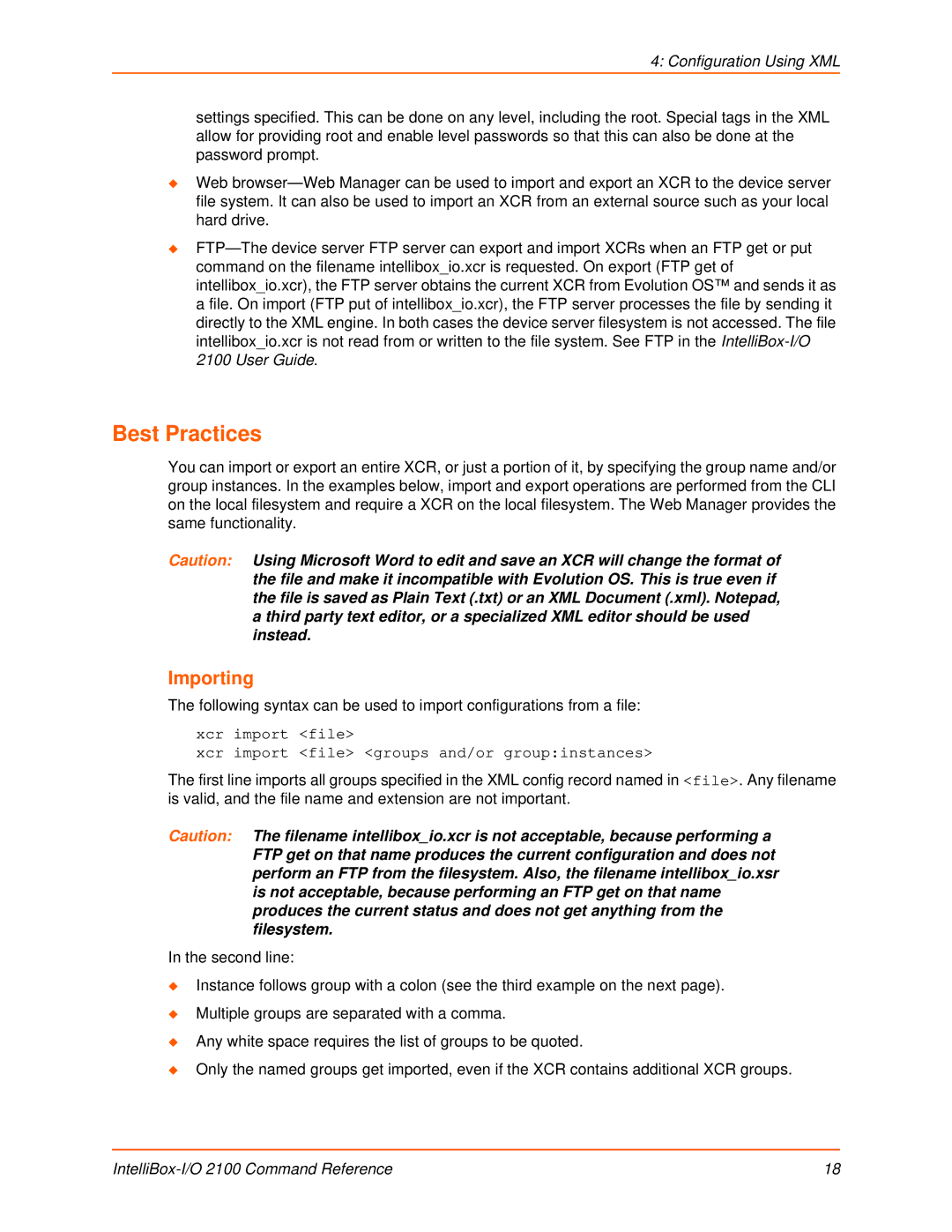
4: Configuration Using XML
settings specified. This can be done on any level, including the root. Special tags in the XML allow for providing root and enable level passwords so that this can also be done at the password prompt.
Web
Best Practices
You can import or export an entire XCR, or just a portion of it, by specifying the group name and/or group instances. In the examples below, import and export operations are performed from the CLI on the local filesystem and require a XCR on the local filesystem. The Web Manager provides the same functionality.
Caution: Using Microsoft Word to edit and save an XCR will change the format of the file and make it incompatible with Evolution OS. This is true even if the file is saved as Plain Text (.txt) or an XML Document (.xml). Notepad, a third party text editor, or a specialized XML editor should be used instead.
Importing
The following syntax can be used to import configurations from a file:
xcr import <file>
xcr import <file> <groups and/or group:instances>
The first line imports all groups specified in the XML config record named in <file>. Any filename is valid, and the file name and extension are not important.
Caution: The filename intellibox_io.xcr is not acceptable, because performing a FTP get on that name produces the current configuration and does not perform an FTP from the filesystem. Also, the filename intellibox_io.xsr is not acceptable, because performing an FTP get on that name produces the current status and does not get anything from the filesystem.
In the second line:
Instance follows group with a colon (see the third example on the next page).
Multiple groups are separated with a comma.
Any white space requires the list of groups to be quoted.
Only the named groups get imported, even if the XCR contains additional XCR groups.
18 |
